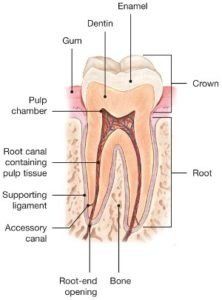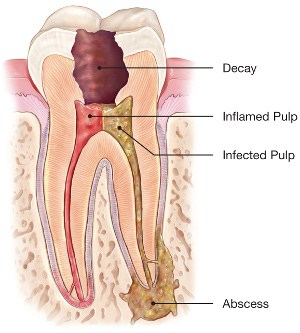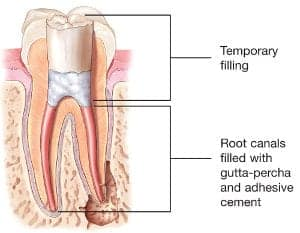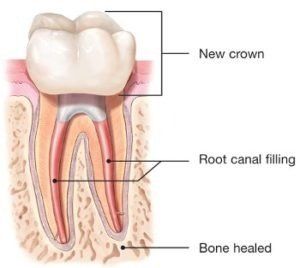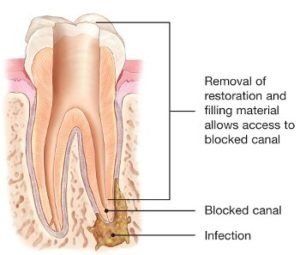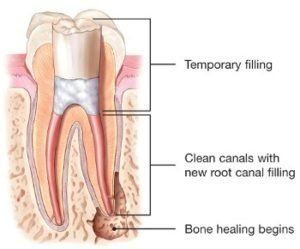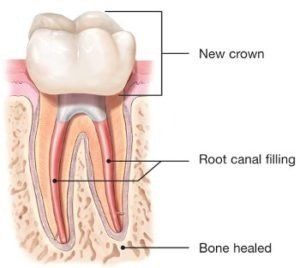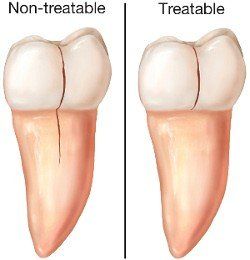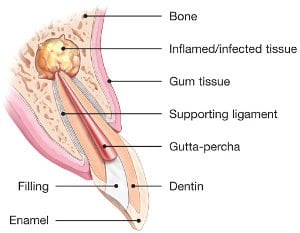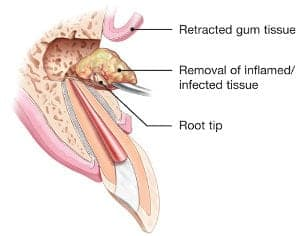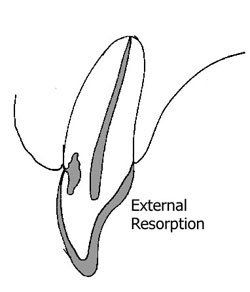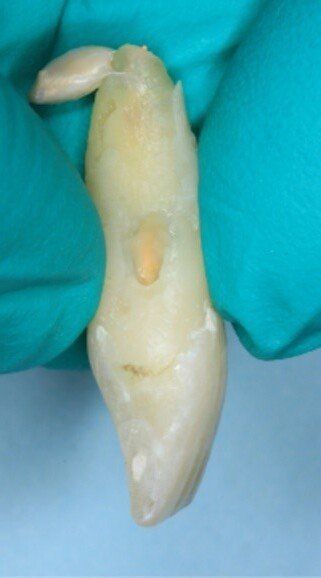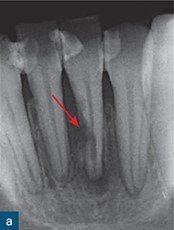PROVIDED TREATMENTS
How Do You Know If Y0u Need Root Canal?
Root canals are needed for a cracked tooth from injury or genetics, a deep cavity, or issues from a previous filling. Patients generally need a root canal when they notice their teeth are sensitive, particularly to hot and cold sensations.
There are a few symptoms that mean you might need a root canal treatment:
•Severe pain while chewing or biting
•Pimples on the gums
•A chipped or cracked tooth
•Lingering sensitivity to hot or cold
•Swollen or tender gums
•Deep decay or darkening of the gums.
Root Canal Treatment
Were you referred to our office for a “root canal”? Please do not be nervous. This informative video will walk you step-by-step through the procedure and explain how Dr. Park can save your teeth:
Root canal treatment is needed when an injury occurs to the pulp and causes irreversible inflammation and/or infection. This is usually due to a deep cavity, broken tooth/filling, trauma or the history or extensiveness of dental treatment the tooth received in the past.
Root canal treatment is designed to eliminate bacteria from the infected root canal, prevent reinfection of the tooth and save the natural tooth. When one
undergoes a root canal, the inflamed or infected pulp is removed and the
inside of the tooth is carefully cleaned and disinfected, then filled and sealed.
After Dr. Park completes root canal treatment, you will need to return to your dentist as soon as possible to have a new crown or other restoration placed on the tooth to protect and restore it to its full function.
First Dr. Park will discuss your treatment options. If you and Dr. Park choose retreatment, she will reopen your tooth to gain access to the root canal filling material. In many cases, complex restorative materials—crown, post and core material—must be disassembled and removed to permit access to the root canals.
After removing the canal filling, Dr. Park can clean the canals and carefully examine the inside of your tooth using magnification and illumination, searching for any additional canals or unusual anatomy that requires treatment.
After cleaning the canals, Dr. Park will fill and seal the canals and place a temporary filling in the tooth. If the canals are unusually narrow or blocked, your endodontist may recommend endodontic surgery. This surgery involves making an incision to allow the other end of the root to be sealed.
After Dr. Park completes retreatment, you will need to return to your dentist as soon as possible to have a new crown or other restoration placed on the tooth to protect and restore it to its full function.
This informative video will walk you step-by-step through the procedure:
Whether your tooth cracks from an injury or general wear and tear, you can experience a variety of symptoms ranging from erratic pain when you chew your food to sudden pain when your tooth is exposed to very hot or cold temperatures. In many cases, the pain may come and go and your dentist may have difficulty locating the tooth causing the discomfort. If you experience these symptoms or suspect a cracked tooth, it’s best to see an endodontist as soon as possible.
Dr. Park specializes in saving cracked teeth and will cater treatment to the type, location, and extent of the crack. The sooner your tooth is treated, the better the outcome. Once treated, most cracked teeth continue to function as they should, for many years of pain-free biting and chewing.
A cracked tooth means a crack extends from the chewing surface of your tooth vertically toward the root. The tooth is not yet separated into pieces, though the crack may gradually spread. Early diagnosis is important in order to save the tooth. If the crack has extended into the pulp, the tooth can be treated with a root canal procedure and a crown to protect the crack from spreading.
However, if the crack extends below the bone level, it is no longer treatable, and the tooth cannot be saved and will need to be extracted.
That’s why early treatment is so important. A cracked tooth that is not treated will progressively worsen, eventually resulting in the loss of the tooth. Early diagnosis and treatment are essential in saving these teeth.
Apicoectomy
Although there are many surgical procedures that can be performed to save a tooth, the most common is called apicoectomy or root-end resection. When inflammation or infection persists in the bony area around the end of your tooth after a root canal procedure, your endodontist may have to perform an apicoectomy.
In this procedure, the Dr. Park opens the gum tissue near the tooth to see the underlying bone and to remove any inflamed or infected tissue. The very end of the root is also removed.
A small filling may be placed in the root to seal the end of the root canal, and a few stitches or sutures are placed in the gingiva to help the tissue heal properly.
Over a period of months, the bone heals around the end of the root.
Resorption
The video translates resorption to mean one’s tooth structure is dissolving. Viewers are then guided through three different types of resorption:
Cervical resorption, which affects the area where the tooth meets the gum. This type of resorption is commonly associated with dental trauma, past orthodontic treatment or internal tooth whitening.
Internal resorption, where pulp, which holds the tooth’s nerves and blood vessels, gets enlarged and dissolves the tooth from the inside out. The video explains this is often caused by a dental infection or dental trauma.
Apical resorption, where the tooth’s root(s) begin to dissolve. This is a normal process when baby teeth are replaced with adult teeth, the video explains. But when external resorption occurs in an adult tooth, it is a problem. If left untreated, the tooth could be lost.
Resorption needs to be diagnosed/treated early, so that the tooth can be retained as long as possible and the patients can avoid premature or unnecessary extraction. As an endodontist, Dr. Park has an advance training in these special complications of the teeth.
Trauma
Traumatic dental injuries often occur as a result of an accident or sports injury. The majority of these injuries are minor - chipped teeth. It’s less common to dislodge your tooth or have it knocked completely out but these injuries are more severe. Treatment depends on the type, location and severity of each injury. Your tooth requires immediate examination by a dentist as the extent or the ramifications of the injury can only be accurately assessed by dentists. Sometimes, your neighboring teeth suffer an additional, unnoticed injury that can only be detected by a thorough dental exam by an endodontist. Your dentist or endodontist may recommend other specialists (oral surgeons, orthodontists, etc.) to be involved in the treatment team following the exam.
Factors that affect the long-term health of your tooth after an injury include: the nature of the injury, the length of time from injury to treatment, how your tooth was cared for after the injury and your body’s response. Getting treatment as soon as possible is very important with dislodged or knocked-out teeth in particular, in order to prevent root resorption.
Resorption occurs when your body, through its own defense mechanisms, begins to reject your own tooth in response to the traumatic injury. Following an injury/endodontic treatment, the tooth needs to be examined on a regular basis to ensure that root resorption is not occurring and that surrounding tissues continue to heal. Unfortunately, some types of resorption are untreatable.
CHIPPED OR FRACTURED TEETH

If you’ve chipped or fractured your tooth’s crown, it’s likely it can be repaired either by reattaching the broken piece or by putting a tooth-colored filling in place. If a significant part of your tooth crown is broken off, an artificial crown or “cap” may be needed to restore it.
When the pulp is exposed or damaged after a crown fracture, root canal treatment may be needed. These injuries require special attention. If breathing through your mouth or drinking cold fluids is painful, bite on clean, moist gauze or cloth to help relieve symptoms until reaching your dentist’s office.
Never use topical oral pain medication (such as Anbesol®) or ointments, or place aspirin on the affected areas to eliminate pain symptoms.
Injuries in the back teeth, such as fractured cusps, cracked teeth require root canal treatment and a full coverage crown to restore function your tooth if the crack extends into the root. More seriously injured split teeth may require extraction.
DISLODGED (LUXATED) TEETH
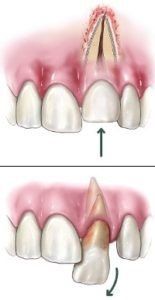
During an injury, a tooth may be pushed sideways, out of or into its socket. The tooth should be repositioned and stabilized in the socket as soon as possible by a dental professional. Root canal treatment is usually needed for permanent teeth that have been dislodged and should be started several days following the injury. Medication may be put inside your tooth as part of the root canal treatment; once treatment is complete and has been deemed successful a permanent root canal filling or crown will be put in place at a later date.
When a child’s tooth is injured, an endodontist is the best doctor to determine if the tooth should be monitored (multiple follow-up appointments are likely to be needed) or intervene immediately. Children ages 12 and under may not always need root canal treatment automatically since their teeth are still developing. Stem cells present in the pulps of children can be stimulated to complete root growth and heal the pulp following injuries or infection.
KNOCKED-OUT (AVULSED) TEETH
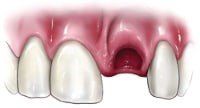
If one of your teeth is completely knocked out of your mouth, see a dentist immediately! Time is of the essence and if you receive treatment quickly, preferably within 30 minutes, there is a chance to save your tooth.
Handle a knocked-out tooth very carefully and don’t touch the root surface. Following a few important steps will help increase the likelihood of saving your tooth. Your endodontist or dentist will evaluate the tooth, place it back in its socket and examine you for any other dental and facial injuries. A stabilizing splint will be placed for the next few weeks. Depending on the stage of root development, your endodontist may start root canal treatment a week or two later.
Depending on the length of time your tooth was out of your mouth and how it was stored before receiving treatment it may be necessary to discuss other treatment options (extraction) with your dentist or endodontist.
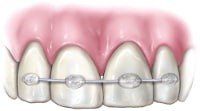
ROOT FRACTURES
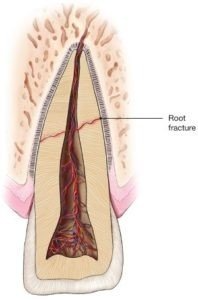
A traumatic injury to your tooth may also result in a horizontal root fracture. The location of the fracture determines the long-term health of your tooth. The closer a fracture is to the root tip, the better the chances of success and long-term health; fractures closer to the gum line are more debilitating for your tooth. Sometimes, stabilization with a splint is required while the tooth heals.
Do traumatic dental injuries differ in CHILDREN?
Chipped primary (baby) teeth can be esthetically restored. Dislodged primary teeth can, in rare cases, be repositioned. However, primary teeth that have been knocked out typically should not be replanted because it may cause further and permanent damage to the underlying permanent tooth that is growing inside the bone.
Children’s permanent teeth that are not fully developed at the time of the injury need special attention and careful follow up, but not all of them will need root canal treatment. In an immature permanent tooth, blood supply to the tooth and stem cells in the region may enable your dentist or endodontist to stimulate continued root growth.
Endodontists will do all that is possible to save the natural tooth and have the knowledge and skill to treat incompletely formed roots in children so that, in some instances, the roots can continue to develop. Look to these specialists for information and their expertise when your child suffered dental trauma.
Internal Bleaching
Internal Bleaching is a technique used to lighten the color of teeth when the darkening of the tooth was due to an internal discoloration. The most common cause for the internal discoloration is trauma. It is different from the conventual (external) bleaching where the source of the teeth darkening is external (food, drinks, etc.).
Internal stains can be treated by internal bleaching, bonding, veneers, or crowns. While each of these methods is safe and effective, your dentist will recommend which treatment is appropriate for you depending on the state of your teeth and the results that you wish to achieve.
